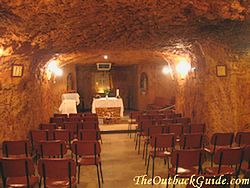MY favorite quote that I shall only paraphrase is, I could just jump in the car and go to the store for a lot of this stuff..but.
http://www.straight.com/article-357270/vancouver/peak-oil-spurring-locals-selfsufficiency
What if you woke up one day and found that the world as you knew it had ceased to exist? It’s a thought that has probably crossed the minds of many and perhaps been quickly dismissed by most as silly.
For Brennan Wauters, this prospect is real. That’s why he’s preparing for what he describes as a “collapse”.
From Wauters’s perspective, the game changer is peak oil. He believes that in the past five years, the world has reached the point of maximum production of oil, and that the supply of this fuel source is on the decline. One day, the pumps may run dry.
But the 42-year-old Vancouver man is not the type to hunker in a bunker. He isn’t storing food, buying gold, or stocking up on weapons to survive in a post-oil world.
“I’m more a survivalist in the sense that I think we have to be psychologically prepared,” Wauters said. “I concentrate on being able to do things with as little as possible. It’s also an exercise to me, like there’s many things that I could just go to the store for. But I deliberately take a harder route just to test my own capabilities, to give me confidence that whatever happens, everything will be fine.”
Learning to grow food is one of those things. Peppers were ready for picking when Wauters showed the Georgia Straight the vegetable plots at the East Side house where he lives with a number of other people. There were also chickens and honeybees out back.
“If there’s a general economic collapse, people are not going to have jobs,” he said. “So they’re going to have time on their hands. And that probably means growing food so that they don’t have to depend upon some larger infrastructure. That’s the clear objective.”
Wauters is also collecting books on edible and medicinal plants. That way, when the Internet is no longer working, he’ll have something to rely on for farming information.
He’s also learning “wildcrafting”, or methods of gathering food from the wild and living off the land. He likewise considers knowledge of canning and smoking food to be important.
Wauters builds sets for movie productions for a living, and that partly explains why he has a large collection of tools. He particularly values hand implements—drills, saws, and sets of screwdrivers—which he said will all be useful when power devices can no longer be plugged into wall sockets.
He can also fix a bicycle, noting that this human-powered conveyance will eventually become more valuable than the automobile.
According to Wauters, neighbours come to him to repair various broken household items. The house where he lives has a shed that stores numerous tools, such as pickaxes, shovels, and rakes.
“The survival aspect is really two things,” he said. “It’s a mental exercise which helps you cope with adversity, and then the other thing is that it prepares you to be creative. You have to be creative to solve those problems that we’re going to face. We can no longer run to the store to buy something to solve our problem.”
:}
More tomorrow.
:}







